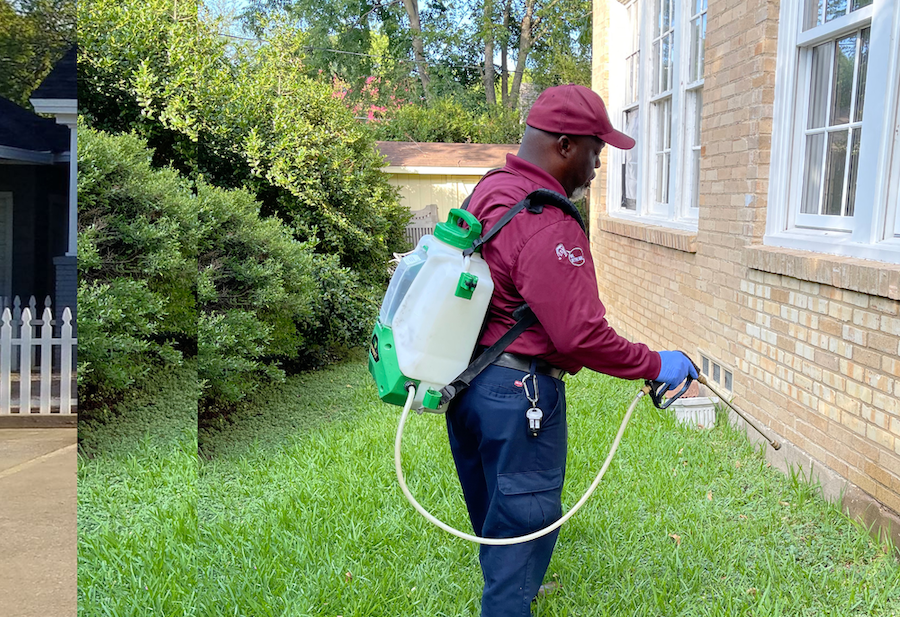Quality A1 Pest Control Services Charlotte - Safeguard Your Home
Quality A1 Pest Control Services Charlotte - Safeguard Your Home
Blog Article
Bed Bug Treatment Failure: Contrasting Chemical Vs. Non-Chemical Solutions
In the world of parasite control, particularly when managing the relentless problem of bed pests, the selection in between chemical and non-chemical treatment solutions can be a pivotal one. Both techniques provide distinct advantages and downsides, affecting variables such as efficiency, safety and security factors to consider, and overall cost. By analyzing the nuanced information of each method, a clearer understanding of which course to go after in attending to a bed insect problem can be obtained.
Performance of Chemical Treatments
Chemical therapies for bed bug infestations have actually been widely identified for their potent and fast efficacy in getting rid of these parasites. When thinking about the efficiency of chemical therapies, it is vital to recognize that they can offer a quick and detailed remedy to a bed bug issue. Expert pest control specialists typically count on pesticides to target bed bugs at various phases of their life cycle, consisting of fairies, adults, and eggs. These chemicals usually work by interfering with the bed insects' anxious system, bring about paralysis and ultimate fatality.
Furthermore, chemical treatments have the benefit of providing residual impacts, implying that they can proceed to eliminate bed insects even after the preliminary application. This residual activity is specifically valuable in combating any kind of possible re-infestations. In addition, the rapid action of chemical therapies can bring relief to individuals dealing with extreme bed bug problems, permitting them to reclaim control of their living spaces quickly.
Safety And Security Interest In Chemical Solutions
One important aspect that requires careful consideration when making use of chemical solutions for bed pest therapy is making sure the safety of occupants and the setting. Exposure to specific chemicals made use of in bed bug treatments can lead to breathing concerns, skin inflammation, or other adverse reactions, specifically in individuals with pre-existing conditions or level of sensitivities.
In addition, the ecological influence of chemical remedies is another substantial consideration. Some chemicals made use of in bed insect treatments might be harmful to beneficial insects, wildlife, and ecological communities if they leach right into the soil or water systems. It is necessary to utilize chemical therapies judiciously, complying with safety standards, and thinking about much less harmful choices to mitigate these dangers and ensure the reliable and secure management of bed bug infestations.
Benefits of Non-Chemical Methods
Considering the possible safety worries and ecological effect related to chemical services for bed bug therapy, checking out non-chemical techniques offers an appealing alternative with numerous distinctive benefits. Non-chemical techniques provide a more secure option for families, specifically those with family pets, people, or kids delicate to extreme chemicals. These approaches get rid of the threats of exposure to hazardous compounds, lowering the potential for adverse wellness effects. Furthermore, non-chemical treatments are ecologically pleasant, as they do not add to air or water air pollution, making them a sustainable choice for bug control.
Additionally, non-chemical solutions can be reliable in targeting bed pests, consisting of hard-to-reach locations where chemical treatments may not pass through. Techniques such as warm treatment, vacuuming, heavy steam cleaning, and cushion encasements supply thorough eradication without making use of unsafe chemicals. Moreover, non-chemical approaches can be much less disruptive, needing minimal preparation and enabling for quicker reentry into dealt with locations. In general, going with non-chemical bed insect treatment methods not just focuses on safety and environmental management but also ensures efficient and extensive parasite control.
Limitations of Non-Chemical Treatments

Additionally, non-chemical treatments usually require numerous applications to attain successful removal. This can be taxing and might not constantly ensure complete elimination of all bed insects and their eggs, specifically in concealed or hard-to-reach areas.
Moreover, the success of non-chemical treatments heavily depends on appropriate execution and thoroughness, which can be challenging for individuals without expert competence. Poor application of non-chemical methods might lead to insufficient elimination, resulting in consistent infestations and the demand for additional therapies.
For that reason, while non-chemical treatments have their benefits, it is important to acknowledge these limitations and consider them when identifying the most efficient strategy for taking care of bed bug infestations.
Price Contrast: Chemical Vs. Non-Chemical Options
Given the limitations connected with non-chemical therapies, a necessary element to examine in the context of bed insect monitoring is the cost comparison between chemical and non-chemical choices. Chemical treatments usually include the application of insecticides by specialists, which can vary from $250 to $900 per room, depending upon the intensity of the invasion and the dimension of the location to be treated. On the other hand, non-chemical therapies like warmth therapy or heavy steam can be much more expensive, with costs varying from $1,000 to $6,000 for a whole home. While the preliminary expense of chemical therapies might cockroach elimination seem reduced, numerous treatments may be called for to completely eliminate the infestation, possibly boosting the general expense. On the other hand, non-chemical choices might provide a much more sustainable and environment-friendly solution, although they can be cost-prohibitive for some individuals. Ultimately, when taking into consideration the price of bed bug therapy choices, it is essential to consider the ahead of time costs against the efficiency and lasting sustainability of the selected method.
Verdict

Thinking about the possible safety and security issues and environmental effect connected with chemical remedies for bed bug therapy, discovering non-chemical approaches provides an encouraging alternative with several unique advantages.Provided the constraints linked with non-chemical treatments, an important facet to examine in the context of bed pest monitoring is the price contrast between chemical and non-chemical choices. In comparison, non-chemical therapies like heat treatment or heavy steam can be a lot more pricey, with costs varying from $1,000 to $6,000 for an entire home. While the preliminary price of chemical therapies might seem reduced, numerous treatments may be needed to fully remove the problem, potentially enhancing the overall price.In verdict, when comparing chemical and non-chemical bed bug treatment choices, it is necessary to consider efficiency, security, benefits, restrictions, and expense.
Report this page